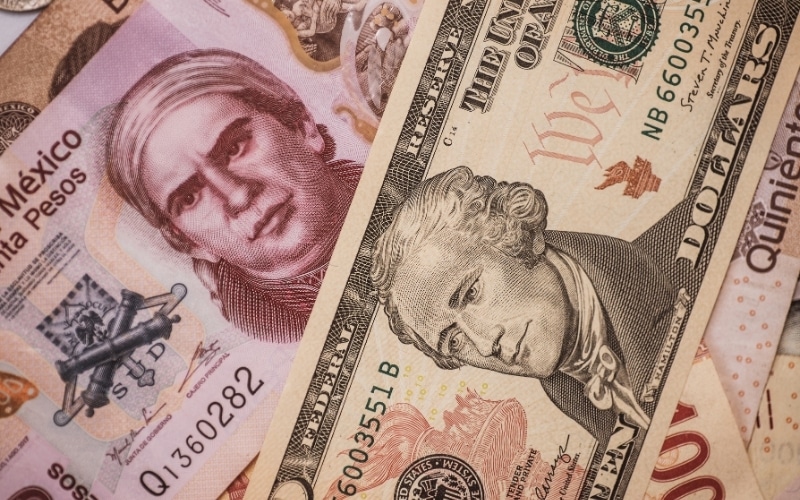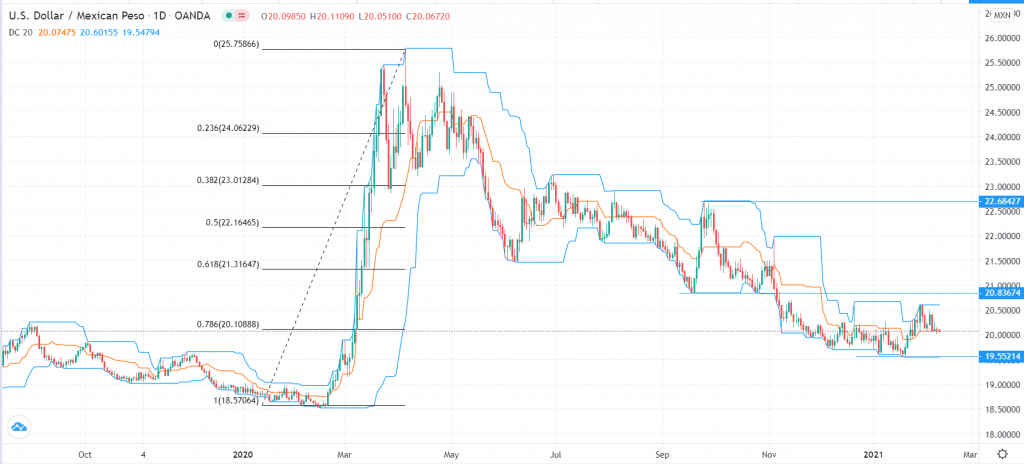
The USD/MXN pair downward trend has continued in the past few days as investors focus on the recent prices of crude oil and higher inflation in Mexico. On Wednesday, the pair was trading at 20.07, which is slightly higher than the year-to-date low of 19.5520.
Higher crude oil prices
Mexico is a relatively major oil producer, exporting more than 1.2 million barrels every day. Therefore, the country benefits when the price of crude oil rises. And that’s what has happened this year. This week, the price of Brent has jumped to more than $61, while the West Texas Intermediate (WTI) is approaching $58. This is the highest level that oil prices have been this year.
There are several catalysts for this price action. First, the United States has already offered a large $900 billion stimulus package. And the politicians are now working on the second $1.9 trillion stimulus package to help support the economy. A stimulus is usually positive for oil prices because it usually boosts demand.
Second, Saudi Arabia has started cutting supplies voluntarily this month. In a deal reached in January, the country said that it would cut more than 1 million barrels of oil per day to help stabilize the prices. Finally, there are signs that demand for oil will rise later this year as countries continue with their vaccination plans.
US stimulus and the Mexican economy
The US and Mexico have a close trade relationship. Every year, the two countries make a trade worth more than $600 billion partly because of the United States Mexico and Canada Agreement (USMCA) that was formerly known as NAFTA.
Therefore, the upcoming stimulus in the United States will have a positive impact on the Mexican economy. Furthermore, it will increase the number of goods that the US buys from the country, which will, in turn, lead to a higher demand for the Mexican peso.
There are other ways in which this stimulus will impact the USD/MXN pair negatively. A rising US trade and budget deficit have the ability to lead to a weaker US dollar. That’s because the two will increase the supply of borrowed dollars in circulation.
In fact, the US dollar has been on a downward trend recently. The dollar index is trading near the lowest level in almost three years, making it one of the worst performers.
Further, the USD/MXN is on edge because of the rising inflation in Mexico. On Tuesday, the Mexican statistics bureau said that the country’s headline inflation rate surged to 3.84% in January from 3.15% a month earlier. The CPI rose by 0.87% on a month-on-month basis. The two numbers were substantially better than expected.
On Wednesday, we will receive the important inflation numbers from the United States. Regardless of how they come, there will possibly be no major changes from the Fed. That’s because the bank has already pledged to let the headline rate run above 2.0% in its bid to stimulate the economy.
USD/MXN technical outlook

The daily chart shows that the USD/MXN pair has been on a downward trend. This has seen it move to the 78.6% Fibonacci retracement level. The price is also at the same level as the middle line of the Donchian channels and below the 15-day and 25-day moving averages. Therefore, in the near term, there is a possibility that the pair will continue falling as bears target the next key support at 19.55.








Leave a Reply